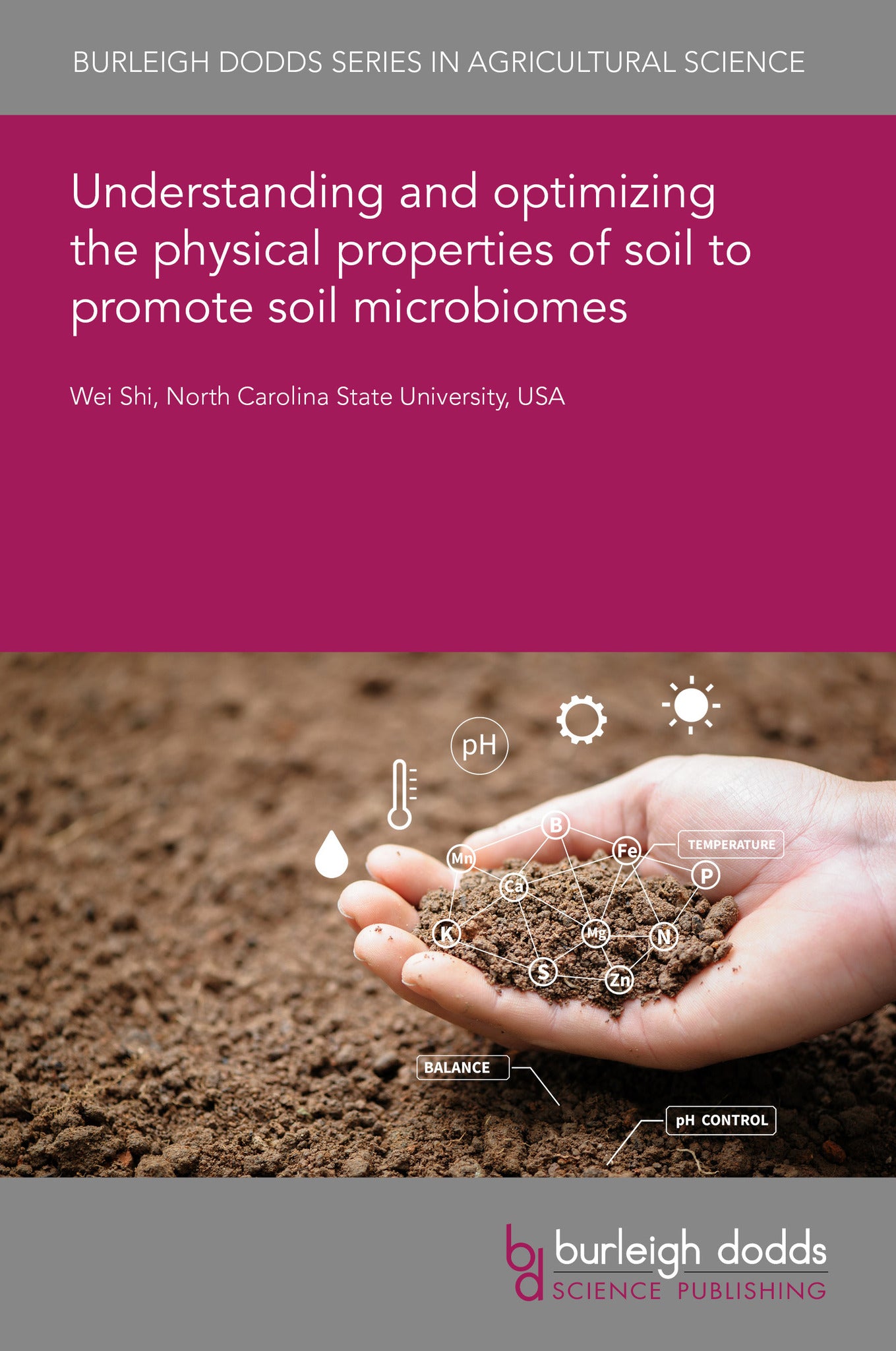We're sorry. An error has occurred
Please cancel or retry.
Understanding and optimizing the physical properties of soil to promote soil microbiomes

Some error occured while loading the Quick View. Please close the Quick View and try reloading the page.
Couldn't load pickup availability
- Format:
-
29 May 2025

The physical environment of soil is characterized by a number of macro- and microscale physical properties that control the heterogenous distribution of microbes, as well as water, air and chemicals within the soil matrix. Heterogeneity occurs at any spatial scale; yet among the most important are soil particles, aggregates and pores. These microscale properties are within the immediate range of microbial influences and connect to macroscale metrics, such as bulk density and porosity to assess soil health and sustainability. This chapter provides a predictive understanding of the physical environment of soil in modulating the soil microbiome. It also delineates mechanic modes underlying how the soil physical environment regulates the microbiome and reviews some trends between the soil microbiota and physical properties. Scalable fine spatial-scale microbial interactions and functions, as well as future perspectives, are also discussed.

TECHNOLOGY & ENGINEERING / Agriculture / Agronomy / Soil Science, Soil science and management, TECHNOLOGY & ENGINEERING / Agriculture / Agronomy / Crop Science, TECHNOLOGY & ENGINEERING / Agriculture / Sustainable Agriculture, Agronomy and crop production, Sustainable agriculture

- 1 Introduction
- 2 The soil physical environment and impact on soil microbiota
- 3 Microbial distribution related to the soil physical environment
- 4 Fine spatial-scale microbial interactions and functions
- 5 Management, macroscale physical properties and the soil microbiome
- 6 Conclusion and future trends
- 7 References



